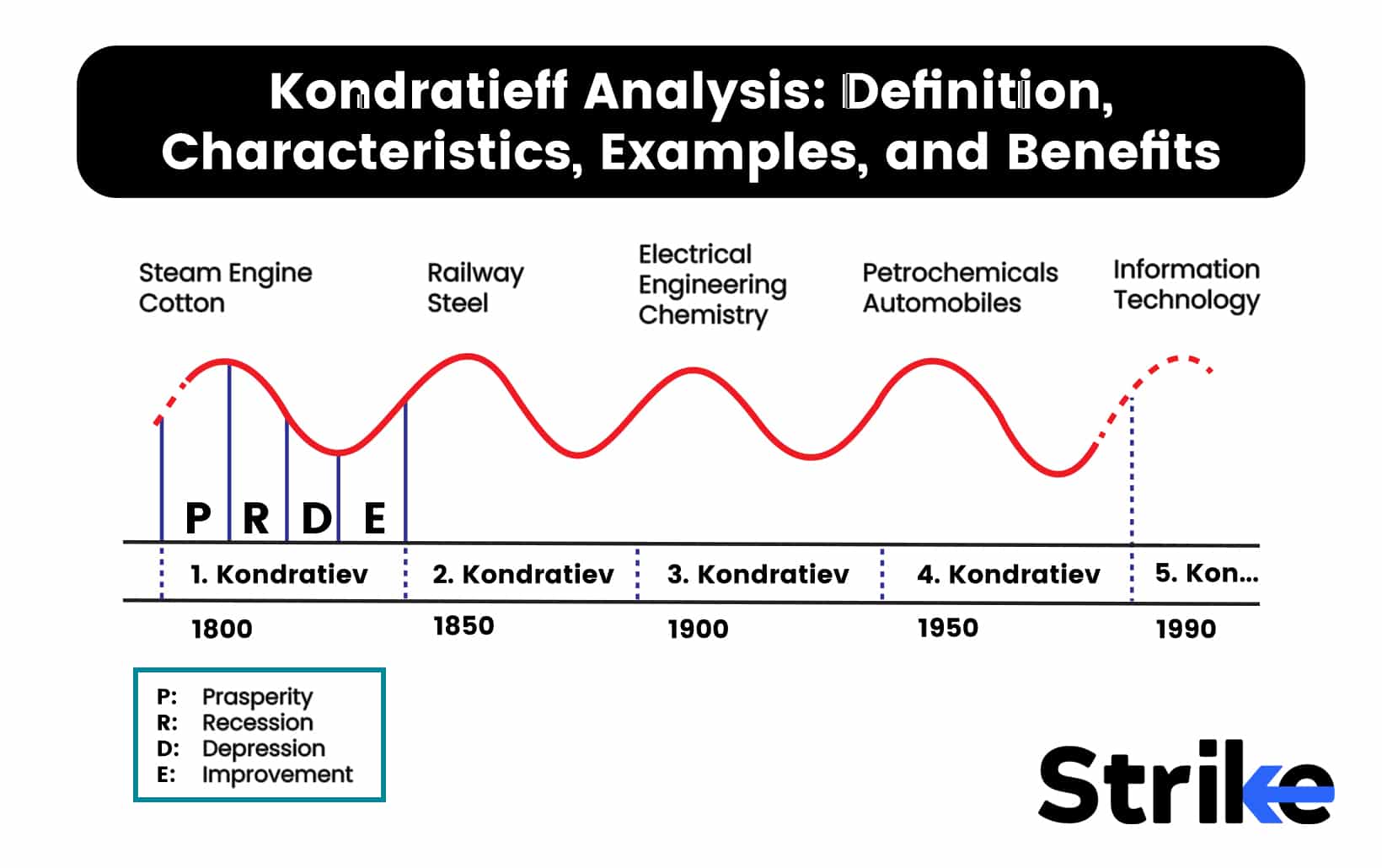
Kondratieff’s Analysis explains long-term economic cycles, providing valuable insights into recurring patterns forming after long durations. Kondratieff Analysis cycles, which cover decades, include times of expansion, stability, and contraction. The Kondratieff Analysis takes into consideration major economic forces, and its capacity to foresee significant changes is among its salient features. Examining historical data allows experts to spot cycles that are characterized by changes in consumer behavior and technological changes taking place during the time period. This Analysis aims to identify the low-level fundamental forces behind major economic changes that cause major socioeconomic changes.
A well-known example in history is how the Industrial Revolution ushered societies into a new era of production and consumption. This revolutionary and slow change was brought to light by Kondratieff Analysis, which provided a lens through which to view its profound effects on economies. Kondratieff Analysis is used by businesses and policymakers to develop strategies required after the economic shift. This Analysis makes it easier to detect upcoming economic changes, which helps directly improve decision-making. Investors alter portfolios to better fit upcoming cycles and improve financial outcomes with the help of insights from the Kondratieff Analysis. Kondratieff’s Analysis essentially reveals the complex dance of economic cycles, enabling people and organizations to negotiate the constantly shifting terrain of prosperity and stagnation.
What Is Kondratieff Analysis?
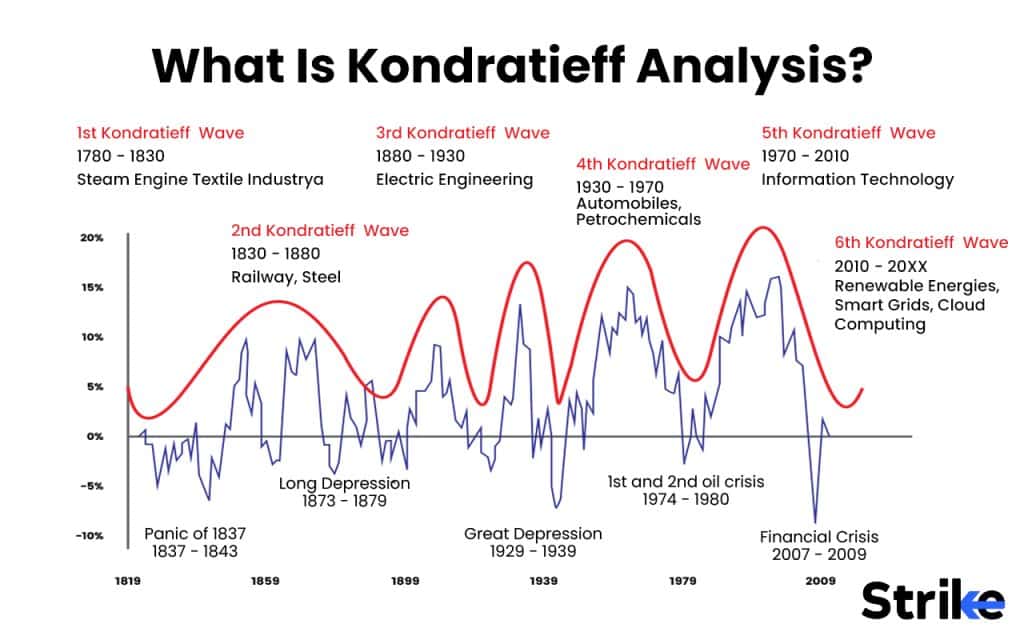
Kondratieff Analysis is a method of examining and predicting long-term economic cycles, offering a clear perspective on the ebbs and flows of economies over extended periods, which are generally in decades. The economist Nikolai Kondratieff made significant contributions to the study of these cycles in the early 20th century; this is the only reason why this Analysis is named after him.
How Does Kondratieff’s Analysis Contribute to Understanding Economic Cycles?
Kondratieff’s Analysis contributes to our understanding of economic cycles by unveiling the connection between the underlying forces that drive these extended patterns of growth and decline. These cycles are also seen in individual domains because of the introduction of new technology. Kondratieff’s Analysis helps us understand economic cycles further by analyzing decades’ worth of historical economic data, allowing us to spot recurring trends and transitions. Economists learn more about the factors that trigger changes in economic activity by carefully examining these cycles. This viewpoint helps to get a deeper understanding of how societal changes, consumer preference changes, and technological advancements work together to shape economies in the future.
Who Was Nikolai Kondratieff?

Nikolai Kondratieff was a Russian economist in the early 20th century. Perhaps his great claim to fame is that he predicted the great depression by studying economic cycles. The long-term economic cycles he studied, later called “Kondratieff waves” (or sometimes “Kondratieff cycles)” are his most recognized contributions. Kondratieff was born in 1892. At any rate, he found that in historical data, there were lengthy economic waves. He said that economies went through periods of inflation, stabilization, and deflation in cycles lasting 50 to 60 years. He said that these were caused by the impact of major production innovations (industrial revolutions) on the growth and size of society and the economy.
What Is Nikolai Kondratieff’s Significance in The Field of Economic Analysis?
The most important contribution made by Kondratieff was the discovery and Analysis of what is now referred to as the Kondratieff economic waves. His famous idealogy was in opposition to the dominant economic theories of the day, which mainly dealt with short-term changes. Kondratieff’s main focus was on the long-term economic cycles, and he made it possible for analysts and governments to understand the bigger factors of economic evolution.
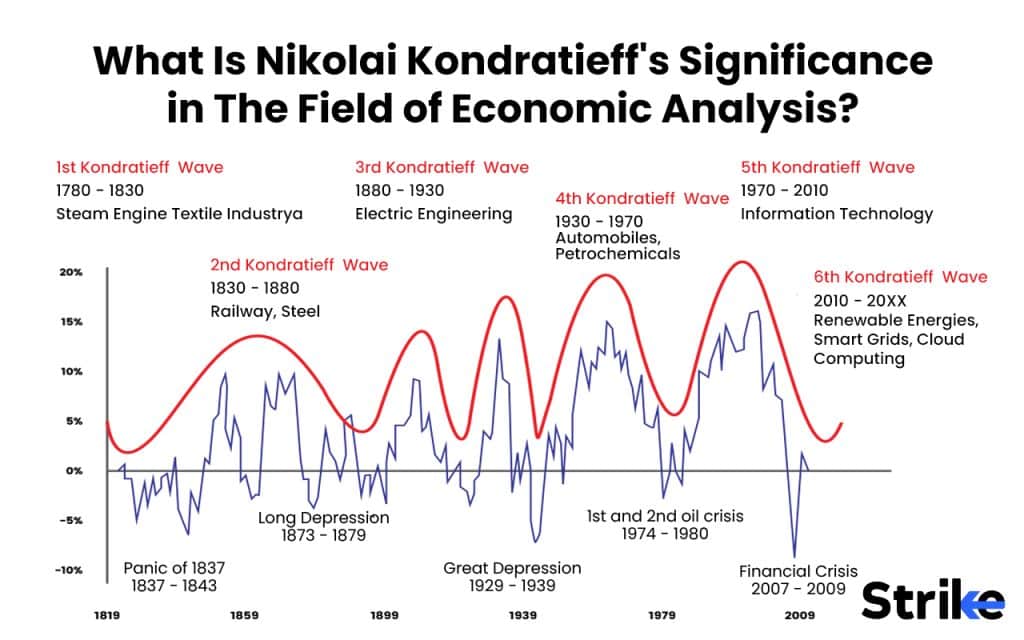
Kondratieff’s work highlights the significance of comprehending the interactions between technological advancements, changes in production techniques, and societal changes. Kondratieff also illustrated how these elements interact to shape economic activity and have an impact on the development and modernization of societies. The foundation for a more thorough understanding of the intricate dynamics that support economies was laid by this comprehensive approach to economic Analysis.
What Are the Main Characteristics of A Kondratieff Cycle?
The Main Characteristic of A Kondratieff Cycle is that it describes long-term cycles in market economies that last between 40 to 60 years. Kondratieff cycles have periods of high growth in some areas. They also have periods of lower growth in the same areas. The areas are investments, productivity, trade, and prices. These long cycles have been dominated by new technologies. The new technologies drive economic growth. They also drive rising prices and wages. Once the technologies mature, their growth potential goes down. This leads to slower economic growth. The cycles eventually allow new innovations and industries. The new things restart the long-term cycle.
How Does Kondratieff Analysis Explain Long-Term Economic Trends and Patterns?
Kondratieff’s Analysis explains long-term Economic Trends and Patterns by identifying long waves or cycles in economic activity that typically last 50–60 years. The long cycles are driven by new main innovations or technologies. Innovations or technologies cause changes in economies. Each cycle has times of growth and times of maturity. New technologies or innovations start new economic growth and good times. The changing structure of economies causes hard times as old industries fail and new ones take their place. Then growth starts again, pushed by the new innovations.
What Are Kondratieff Waves?
Kondratieff Waves are long-term, high-amplitude cycles of economic and technological development in capitalist economies. These cycles were originally proposed by Russian economist Nikolai Kondratieff in the 1920s. Kondratieff Waves is a cycle of four distinct phases that consist of the following: prosperity, recession, depression, and improvement. .
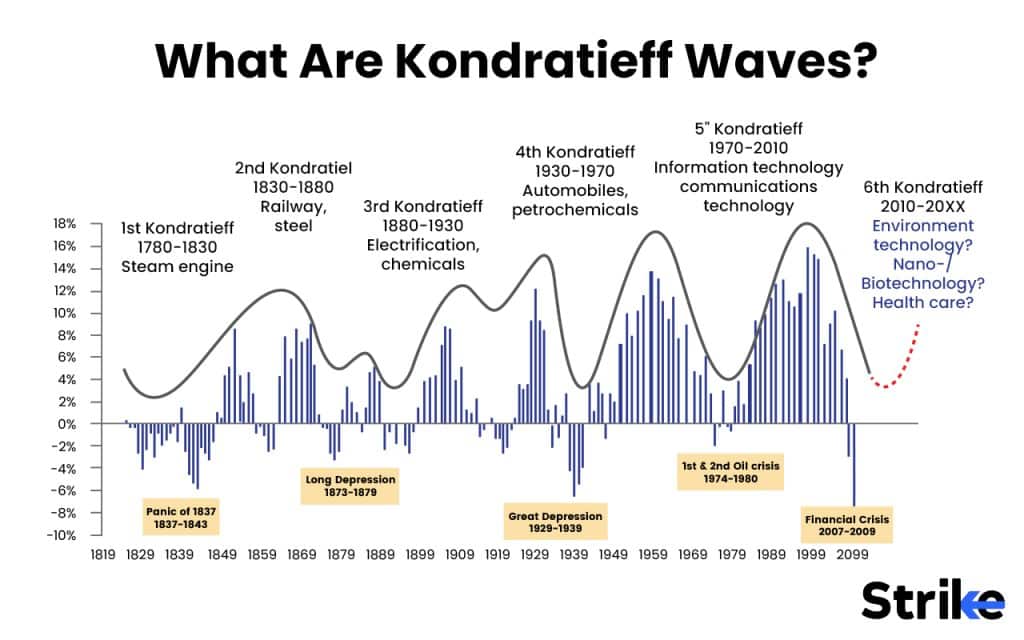
Spring Phase (Recovery and Innovation). The Kondratieff Wave begins with the Spring phase, marked by an economic recovery from the previous downturn. During this phase, new technological innovations emerge and lead to the creation of new industries and markets. These innovations drive productivity gains and stimulate economic growth.
Summer Phase (Expansion and Growth). The Spring phase transitions into the Summer phase, characterized by a period of robust economic expansion and growth. New industries flourish, and existing ones expand. Employment levels rise, and consumer confidence increases. The economy experiences sustained prosperity during this phase.
Autumn Phase (Stabilization and Maturity). The Summer phase eventually gives way to the Autumn phase, where economic growth stabilizes. The technologies introduced during the previous phases become integrated into everyday life, leading to a period of relative maturity for the economy. Growth rates moderate, and markets become more saturated.
Winter Phase (Downturn and Contraction). The Autumn phase culminates in the Winter phase, marked by an economic downturn and contraction. This phase is characterized by reduced economic activity, lower consumer spending, and declining business investment. Industries may face challenges, and unemployment rates may rise.
Renewal and Restart. After the winter phase, the cycle begins anew, and so does the spring phase. The economic downturn creates conditions for new innovations to take root, leading to the resurgence of economic activity and the start of a new Kondratieff Wave.
Kondratieff Waves are driven by the interaction between technological innovation, economic activity, and societal changes. The introduction of new technologies fuels economic growth and transforms various sectors, leading to shifts in production, consumption, and employment. The impact of these innovations becomes more widespread, contributing to the cyclical nature of these waves. Critics argue that economic cycles are influenced by a variety of factors beyond technology and that the duration and regularity of Kondratieff Waves vary. The concept of Kondratieff Waves remains a useful framework for understanding the interconnectedness of technological progress and economic development over extended periods.
What Are the Key Factors that Influence Kondratieff Waves?
The primary driver behind the Kondratieff wave is technological innovation. Breakthroughs in science and technology drive the development of new products, processes, and industries, which, in turn, facilitates economic growth and creates new opportunities. These innovations often spur waves of investment and entrepreneurial activity.
The establishment and expansion of infrastructure — such as transportation networks, communication systems, and energy grids — are critical for facilitating the diffusion and adoption of new technologies. “Hard” infrastructure both supports the growth of those industries and raises productivity.
The willingness of entrepreneurs and investors to take risks and explore new business opportunities is essential for the propagation of Kondratieff Waves. During the Spring phase, innovative entrepreneurs drive the adoption of emerging technologies while investment capital fuels their development.
Changes in consumer preferences and behaviors influence the demand for new products and services. Innovations that align with evolving consumer needs tend to gain traction and contribute to the expansion of industries.
How Does Kondratieff’s Analysis Relate to Other Economic Theories?
Kondratieff’s Analysis Relates to Other Economic Theories by identifying long-term cycles in the overall economy rather than focusing only on short-term fluctuations. His idea of long waves complemented the work of economist Joseph Schumpeter on “creative destruction” and technological innovation driving long-run growth. Later economists built on Kondratieff’s work by providing additional theories for what may cause the long waves, such as clusters of new technologies as proposed by Freeman and Perez. While controversial, the theory of long economic waves provides an alternative lens to examine macroeconomic trends beyond traditional business cycle analysis. Kondratieff wave analysis remains relevant today for considering interactions between technological, economic, and social change over decades.
What Are the Benefits of Kondratieff Analysis for Forecasting?
There are five main advantages of using Kondratieff analysis for long-term economic forecasting. Below is a list of them.
- It helps identify impending turning points in the overall economy that may not yet be apparent from more conventional short-term indicators. By spotting signs that a long downturn may be emerging or a new upswing is building momentum, forecasters can prepare accordingly.
- Analyzing which socio-technological factors are driving each long wave gives insight into what types of economic activities are likely to flourish or decline in the coming decades.
- Comparing the current long-wave phase to previous cycles highlights historical precedents that may reveal broader trends.
- It encourages consideration of non-economic forces like geopolitics, demographics, and environment that influence long-term trajectories.
- Adopting a 50+ year outlook focuses attention on potentially game-changing disruptions like artificial intelligence or climate change that are difficult to foresee via conventional forecasting methods with shorter horizons.
Kondratieff’s analysis provides a useful framework for forecasters to take a long-term view of economic trends, anticipate turning points, and consider disruptive influences – helping improve the accuracy and relevance of projections that extend decades into the future.
What are the limitations of Kondratieff’s forecasting analysis?
There are four main limitations to using Kondratieff analysis for economic forecasting.
- Kondratieff cycles are very long-term, around 50-60 years. This makes it difficult to identify where in the cycle the economy is currently and how close it is to turning points.
- The causes of long waves are complex, with different factors potentially driving different cycles. It’s hard to isolate the key drivers to predict if and when they may change.
- Geopolitics and technological innovations can disrupt or alter the typical pattern of cycles. Major world events or unexpected technological breakthroughs may cause deviations from typical K-wave patterns.
- Kondratieff waves describe general long-term trends but do not predict the specific timing and magnitude of ups and downs within cycles. Shorter-term economic fluctuations and business cycles still occur within the larger Kondratieff waves.
Kondratieff’s analysis provides a framework for understanding long-term secular trends in the economy; there are substantial limitations when attempting to apply it for forecasting purposes.
How Is Kondratieff Analysis Applied in Real-world Applications?
Kondratieff analysis is applied in real-world applications by investment firms and macroeconomic forecasters to gain insights into long-term business cycles. Understanding where in the Kondratieff cycle the current economy is positioned can help guide strategic decisions around areas like capital investments, research and development initiatives, hiring and staffing levels, and inventory management.
By analyzing indicators like commodity prices, interest rates, inflation levels, and the pace of technological innovations, Kondratieff analysts aim to determine if an economy is in an upswing toward a peak or in a downturn heading toward a trough. This long-wave perspective can be invaluable for companies operating in industries like construction, manufacturing, and energy that involve large capital expenditures. Anticipating the likely direction and duration of the next Kondratieff cycle helps such organizations strategically time their big-ticket investments and resource allocation.
Can Kondratieff Analysis Predict Future Economic Trends and Identify Potential Investment Opportunities?
Yes, Kondratieff Analysis helps in developing a valuable framework for understanding long-term economic trends, but it is not designed to predict future events with high precision. It offers insights into the broader patterns of innovation, growth, and decline, but it has limitations when it comes to specific predictions and investment opportunities.
Is the Kondratieff Wave Also Known as Super-Cycles?
Yes, “Super-Cycles” is a popular term that has been used to describe the Kondratieff Wave for a very long time. The idea that Kondratieff Waves represents longer and more detailed cycles contrary to shorter-term business cycles helped it to capture the term “Super-Cycles.” These Super-Cycles span decades and are differentiated by degrees of three basic economic factors: expansion, stability, and contraction. The term “Super-Cycles” highlights the bigger, more detailed duration and the wider impact of these cycles on major faces of the economy and society.
Did Kondratieff’s Home Country Reject His Theory?
Yes, the Soviet Union, which is Kondratieff’s home nation, first rejected the fundamentals of his idea. Russian economist Nikolai Kondratieff developed his theory of long economic cycles, popularly known as Kondratieff Waves or Kondratieff Cycles. He introduced his hypothesis during the 1920s when he was collaborating with the Institute of Conjuncture situated in Moscow.







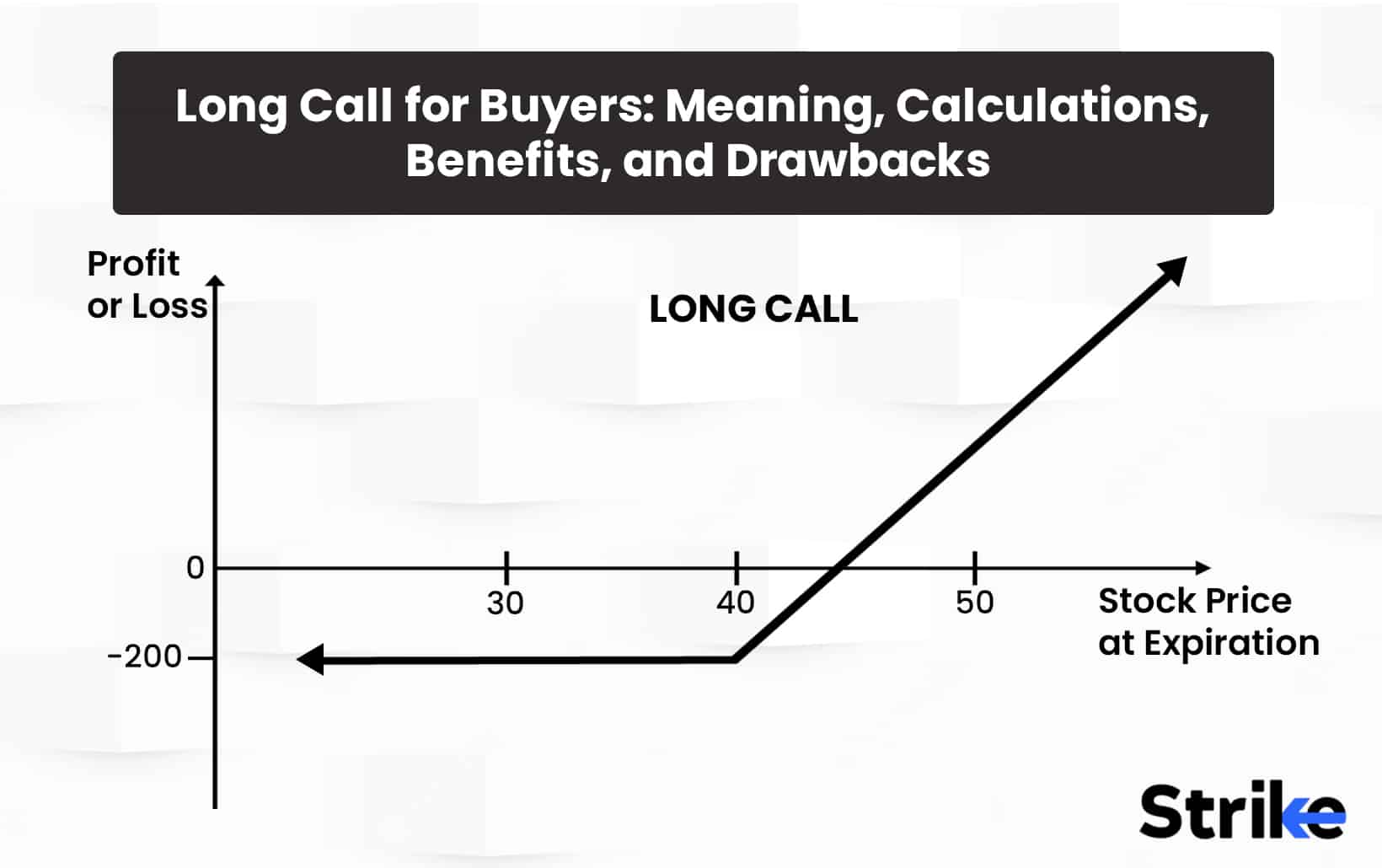
![85 Common Stock Market Terminologies for Dummies [Updated List for 2025] 52 85 Common Stock Market Terminologies for Dummies [Updated List for 2025]](https://www.strike.money/wp-content/uploads/2025/04/Popular-Stock-Market-Terms-for-Beginners-Banner.png)







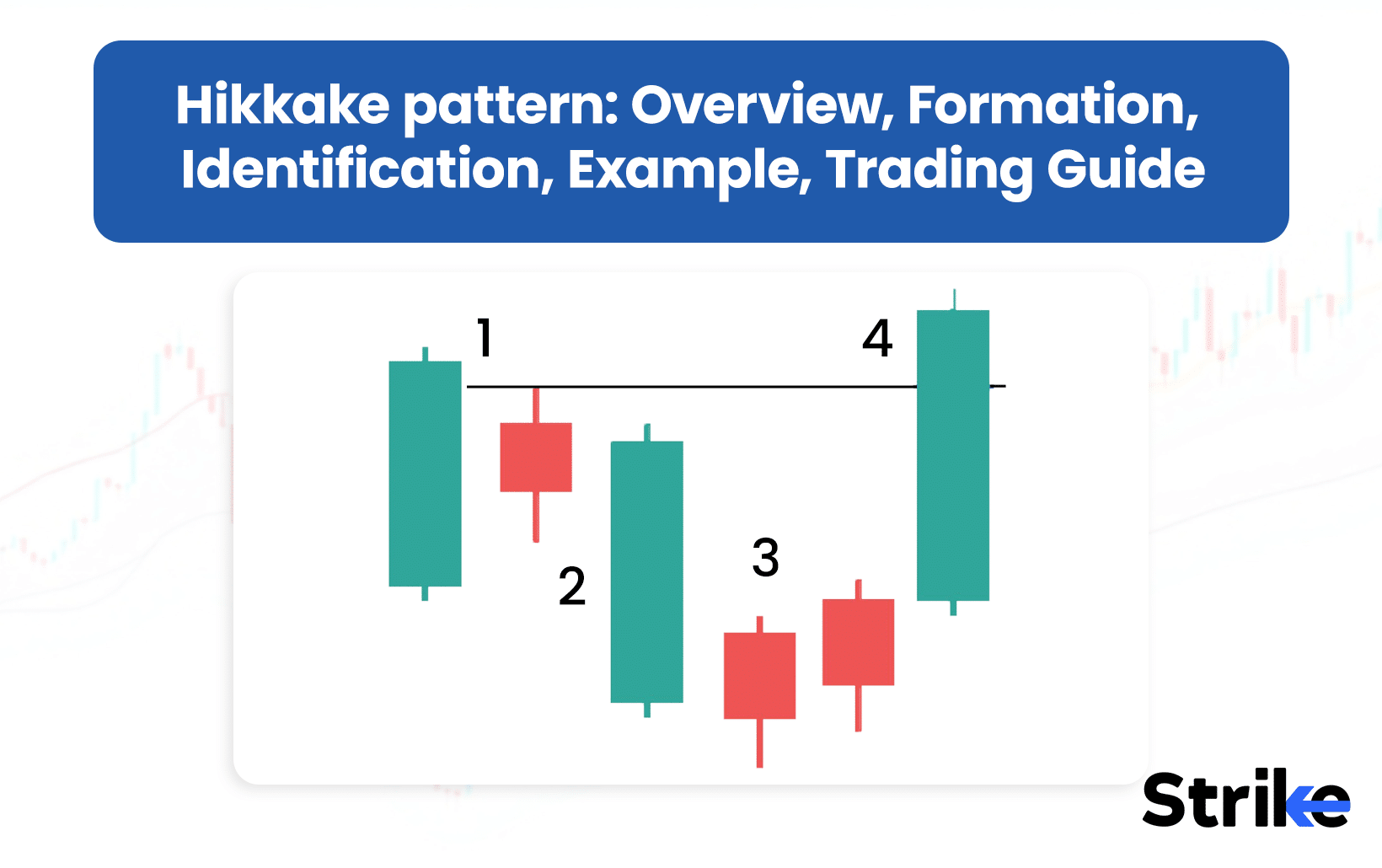



No Comments Yet.